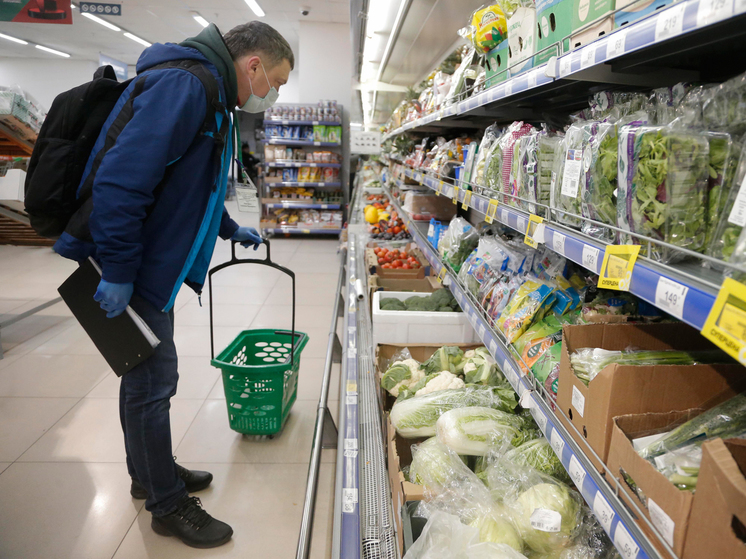Prices are rising while the economy is slowing down
The past July, with its indexation of housing and communal services tariffs and the Central Bank's decision to raise the rate to 18%, added particular urgency to the topic of inflation, which has been migrating from month to month. According to Rosstat, consumer prices rose to 1.14% in monthly terms and to 9.13% in annual terms. Moreover, in the first case, the indicator turned out to be a record since April 2022. At the same time, an alarming trend towards a slowdown in economic growth has emerged, which, combined with persistent high inflation, means a stagflation scenario.

The main contribution to the July price jump was made by utility tariffs: the average payment increased by 9.8%, and gas for the population increased in price by 11.2% — the maximum amount in the last 11 years. Prices for food products increased by 9.67% year-on-year, for non-food products — by 6.66%, for services — by 11.36%. Inflation has been accelerating since the second half of last year, recalled Deputy Chairman of the Central Bank Alexei Zabotkin, warning that in the third quarter the regulator may raise the key rate to 20% if it deems it necessary.
Meanwhile, recently, it seems, the warning of the head of the Central Bank, Elvira Nabiullina, regarding the threat of stagflation has begun to come true. Since, according to her, “reserves of labor and production capacity are almost exhausted,” the situation is fraught with a slowdown in GDP growth, “despite all attempts to stimulate demand.” Actually, this is already happening in full swing: back in June, the volume of industrial output increased in annual terms by only 1.9% (in May — by 5.3%), the volume of construction work — by 1.2% (by 7%), cargo turnover transport decreased by 0.8% (in May it increased by 0.8%).
– According to Rosstat, in the second quarter, GDP added 4% year-on-year, while in the first quarter it was 5.4%, – says Nikita Maslennikov, leading expert at the Center for Political Technologies. – In turn, the Central Bank in its “Monitoring of Sectoral Financial Flows” noted signs of a cooling in business activity in July 2024. The volume of incoming payments made through the system controlled by the regulator decreased by 1.2% compared to the average level of the second quarter. Moreover, we are talking about almost all components of the overall dynamics of incoming payments: investment demand, intermediate demand, government consumption, and exports.
— It’s unclear. There is no single trend here. On the one hand, consumer demand in certain segments may well cool down, on the other hand, additional restrictions on the supply side may arise. Imports are declining, this process is not compensated by import substitution, investment activity is stagnating. At the same time, sales in the car market increased in July – by 9.2% month-on-month and by more than 44% over the year. From October 1, the recycling fee will increase; accordingly, car prices will jump even more, which will again boost demand. A similar trend is emerging for household appliances, electronics, and gadgets.
– Of course, its current dynamics may set an apocalyptic mood. But if there had been no indexation of housing and communal services tariffs in July, it would have grown by only half a percent in monthly terms. Again, here we have a lot of local factors that act in opposition and confuse all the plans. For example, the cost of economy class airline tickets has decreased by 7%. Airlines did this, fearing that the state would set a price ceiling on certain routes. Or, say, fruit and vegetable products have become cheaper, since now is the high season. But if we take, say, apples, there are practically none left in Russia: they have all gone for processing, juice producers are experiencing a shortage of raw materials. This means that they will have to buy imported ones, but at different prices. The grain harvest is not obvious, the forecasts on this account are unclear. It is clear that it will be lower than last year. But by how much and for what specific categories of grain? The cost of wheat and flour is one of the fundamental indicators that further builds a price grid for all food products, from the current consumption of bakery products to meat and chicken.
– Until inflation slows down and at the same time production does not expand, and significantly, the economy will slide directly into stagflation. In 2026, we risk being “up to our ears” in it. Macrodynamics (according to the Central Bank’s forecast, in 2025, GDP will grow within 0.5-1.5%) and business activity are clearly slowing down today, but the process of slowing down inflation is very sluggish. As world experience shows, stagflation can only be broken out through a recession, otherwise it cannot be “cured”.


